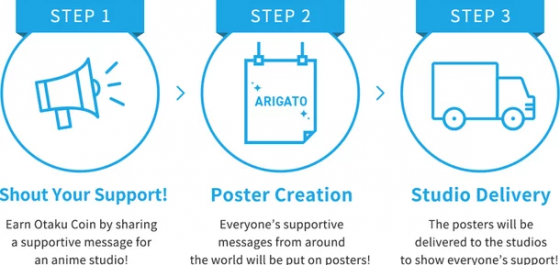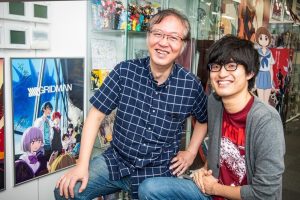
What You Need to Know:
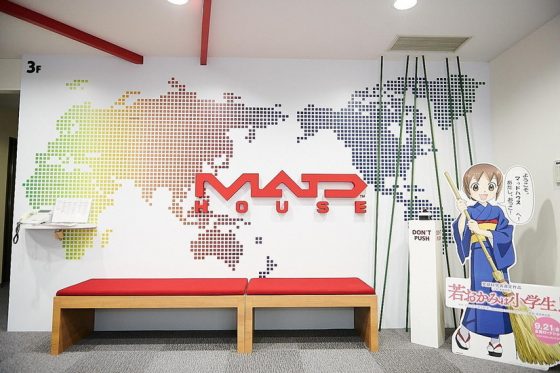
The Entrance to Madhouse
- It's a brand new year which means brand new collaborative projects, and our wonderful partners over at Tokyo Otaku Mode are back at it again with theirAnime Site Collaboration Project. This time they'll be looking at the powerful production studio, Madhouse, known for Cardcaptor Sakura, Death Note, Chihayafuru, Death Parade, and more!
- We have an exclusive interview that TOM provided and we have permission to share it all with you, so feel free to leave your comments below! Let's hop right in! Also, don't forget to show support for Otaku Coin by downloading the app! Android version is here.
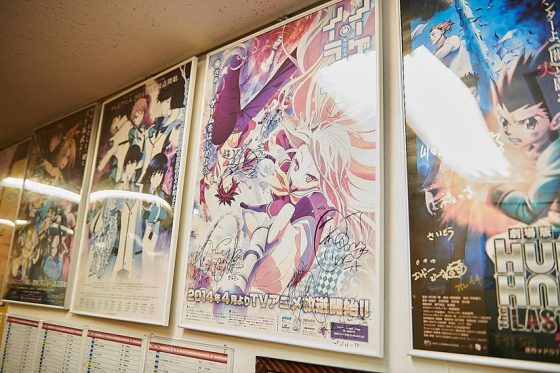
THE HALLWAY CONNECTED TO THE INTERVIEW ROOM WAS DECORATED WITH POSTERS OF THE VARIOUS TITLES THAT THE STUDIO HAS WORKED ON.
Source: Official Press Release
About Madhouse
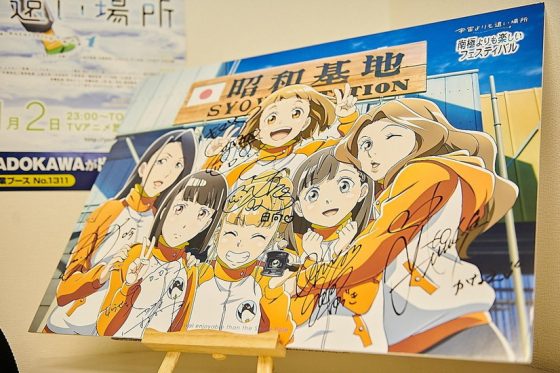
A PANEL FILLED WITH SIGNATURES FROM THE VOICE ACTORS OF A PLACE FURTHER THAN THE UNIVERSE.
Madhouse is a production studio that has continued to create titles that are popular not just in Japan, but around the world. What is the source of their charm and energy? TOM's very own Ryota Fujitsu, sat down with Kenji Nakamoto and Atsuko Ishizuka, the producer and director of A Place Further than the Universe, one of 2018’s hit titles.
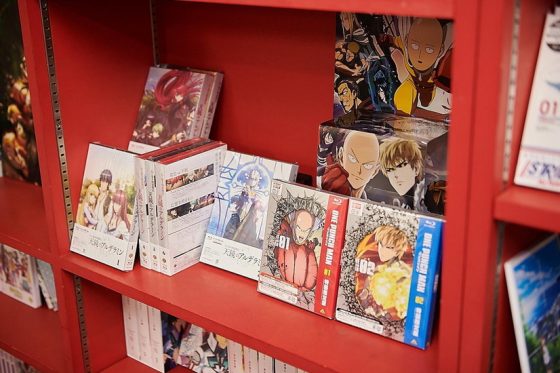
ONE PUNCH MAN, A TITLE WITH HIGH-QUALITY ACTION SCENES, BECAME INCREDIBLY POPULAR BOTH IN AND OUT OF JAPAN.
Exclusive Interview
TOM (Ryota): Before you entered Madhouse, what kind of image did you hold of the company?
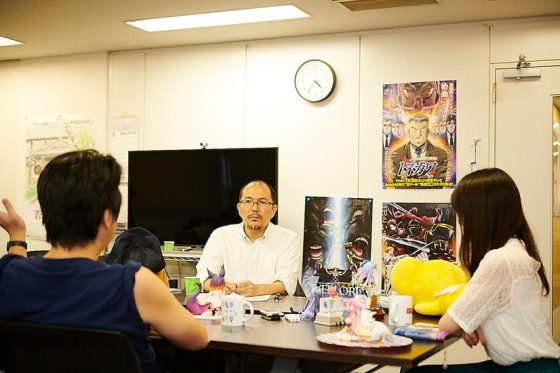
Nakamoto: I wasn’t that knowledgeable about anime, but when it came time to find a job, I decided to try my hand at anime and applied for Madhouse. At the time, all I knew was that it was a company that did the titles directed by Yoshiaki Kawajiri, like Ninja Scroll. So when I came for an interview and I saw the poster for Azuki-chan, a series that I liked a lot, on the door, I wondered why it was there (laughs). That was when I realized that it was only natural for an anime studio to have various directors working on various titles at the same time. That was around the same time when Madhouse had begun working on a number of TV series, so even though they hadn’t had regular job openings before then, they suddenly needed a lot more staff and they hired me.
Ishizuka: Actually, I didn’t know anything about anime companies when I joined, either. I decided that I wanted to join the anime industry when I started job hunting. When I finally started researching anime companies, I realized that a lot of the anime titles that I enjoyed regardless of genre were made by Madhouse. It made me feel that their titles were diverse and that it was a company where I could try a lot of new things. When I actually joined, I grew to see that the studio actually does have its own characteristics and colors.
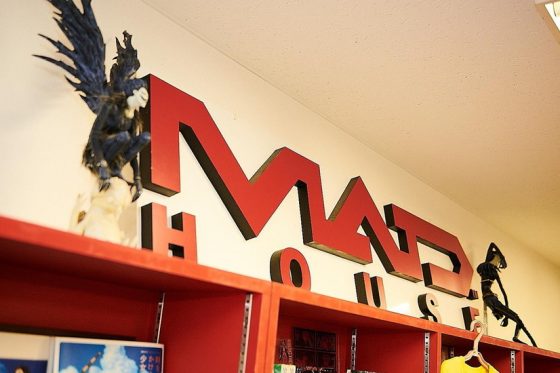
TOM (Ryota): What do you mean by colors?
Ishizuka: What I’ve realized by watching many different titles is that titles made by Madhouse have rich art. Because of that, our target demographics are generally higher in age. We’re good at that kind of animation, which also connects to our popularity overseas. I only realized that after I joined the company, though.
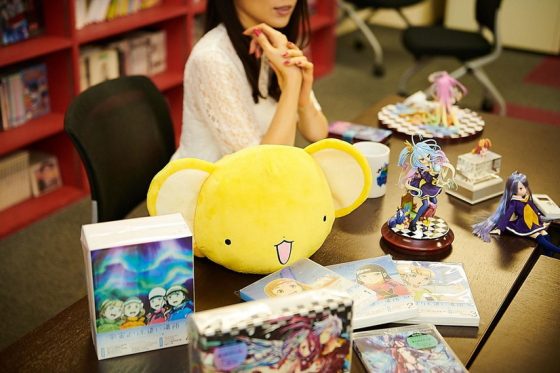
Nakamoto: I believe that most anime companies have their own characteristics, but Madhouse is a company that handles very diverse titles, from adult titles to kids’ shows, TV series, movies, comedies, and serious dramas. I feel that one of the roots of Madhouse is that spirit of trying anything we think is interesting. Because we have such a varied history, I believe that anyone could find at least one Madhouse title that they enjoy in their lifetime.
TOM (Ryota): Madhouse is a studio that churns out directors. Do you think that the corporate culture has an effect on that?
Ishizuka: There’s no mistake in saying that Madhouse is a great training ground for directors. As Mr. Nakamoto said, the way we as a studio consider titles, is the idea of properly making fun titles or bringing forth interesting projects. Because of that, we search for the best way to show that particular title’s charms, and to do that we must place importance on the director’s opinions. In other words, the director must be a specialist in knowing how to make people have fun. Because we respect their opinion, that means their responsibility is greater, and they also must have the power to lead a team of staff members. This is a place where you can polish your skills for managing group work and your talent as a creator pursuing entertainment.
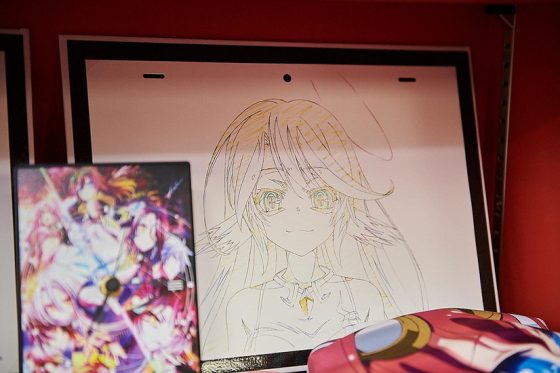
TOM (Ryota): Do you feel that Madhouse is a big company or a small one?
Nakamoto: Hmm, I wonder. Because I work here, I don’t really know, but I don’t feel like it’s particularly big. It isn’t all that small either, so maybe medium? (laughs)
Ishizuka: (laughs) But it is a size where you can naturally run into people throughout the company. Unless you really hate other people, you can spontaneously come into contact with someone else.
Nakamoto: There are studios that split each title into different rooms, but in our case, everyone works on the same floor. The production team and other staff members of every title work in the same area so that probably connects to our feeling of collectivity.
Ishizuka: Depending on the space, the person next to me might be working on a completely different title. I’ve never thought about it, but that sort of thing might be a good breath of fresh air, too.
Nakamoto: When I joined the company, it was in Asagaya. The office was set up in a similar way, but that building was a particularly good one. The ceilings were high and you could easily take a lap around the whole company, which meant the ventilation was good, too. When I had something to do, I would go out of my way to walk around the whole company. That way, I could see who was working on what and how. We’re still on one floor and that’s fine, but it isn’t as easy now.

Ishizuka: These hallways have corners, after all.
TOM (Ryota): Here’s one of the questions that Tokyo Otaku Mode received from an international fan. “Please tell me how you became a director.” Ms. Ishizuka, you originally worked freelance, so why did you join Madhouse and how did you choose to become an anime director?
Ishizuka: When I was a college student, I wanted to work in entertainment, especially anime. But at the time, I didn’t have any friends who made anime and I had to struggle alone to come up with ideas on how to express things. However, the art that I drew and the ways I expressed things in anime were closer to artistic animation. Of course, my production scale was small and I didn’t have the time or technique to create a long story. What I wanted to do was to create entertainment like the TV shows that many people watched as kids, but I realized that it was very difficult to do that on my own. Because of that, I decided to work as a member of a production team rather than as a solo artist. That way, I could search for new methods and increase the solutions at my fingertips. Because there were many things I couldn’t do, I yearned to be in a studio with lots of other people making anime.

TOM (Ryota): So you wanted to make titles made by people for people.
Ishizuka: That’s correct.
TOM (Ryota): Mr. Nakamoto, did you also join Madhouse with the desire of wanting to make a specific type of title?
Nakamoto: I didn’t have any specific idea at the time. I just wanted to be involved in fantastic projects. I’m not the type to be particular about subjects or themes, but I’d rather try stuff that might be interesting. Producers don’t decide things on their own. I have multiple meetings with directors and scriptwriters to finalize plots, and our different opinions about how things should go or where things should lead contribute to the story. It isn’t always like that, but in the beginning, I’m fine with just trying things that are interesting. For example, for A Place Further than the Universe (following: A Place), we went through some stormy times (laughs).
TOM (Ryota): I’ve heard that there were many ups and downs before you finally got to the current “a high school girl aims to go to Antarctica” plot for A Place. Is there a reason that it was reworked so much?
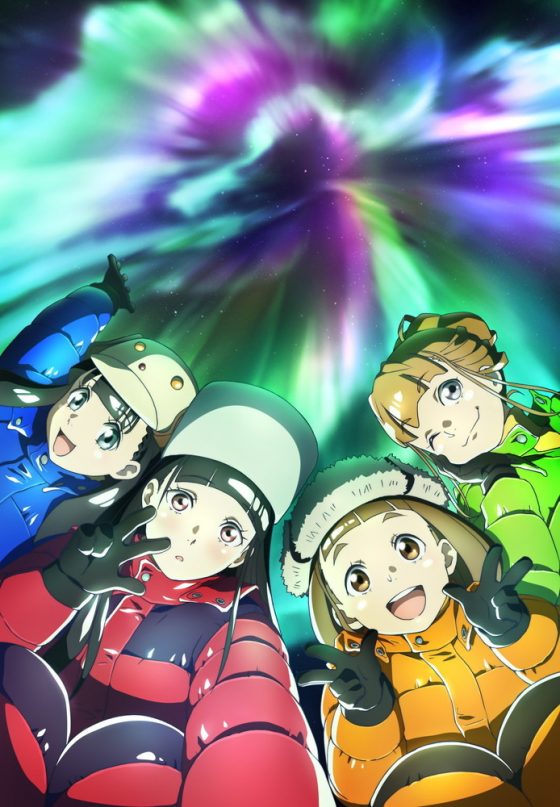
©YORIMOI PARTNERS
Ishizuka: The skeleton for A Place was the desire to create a story where high school girls work hard and grow. Because of that, the result of their growth was important and constructing the story where we could see their future in the last episode was a major point. So, when we were working on the plot, there were moments when we couldn’t see their futures and we had to scrap the story and look at the characters again.
Nakamoto: There were many opinions given, and in the end it ended up being whether or not the characters and story worked as film. We aimed for that and quarreled over what needed to be included, which made it more precise.
Ishizuka: That’s right. Instead of just throwing ideas at each other, we put all the details on the table and then I or the writer, Juuki Hanada, would think hard about them.
TOM (Ryota): Fans want to know how you come up with your wonderful ideas, but do those ideas become a success due to the many meetings that you have over them?
Nakamoto: I think that ideas come from someone’s inspiration or impression. Whether or not we can combine them properly comes from hearing everyone’s opinions.
Ishizuka: The good thing about speaking with everyone is that you can come up with ideas that you normally couldn’t by yourself or reach a conclusion that you never expected.
TOM (Ryota): Mr. Nakamoto, as a producer, what do you keep in mind in order to make meetings good ones?
Nakamoto: When we’re stuck in meetings, sometimes it just falls silent. At those times, I don’t know what to say, so instead I just end up eating all the snacks on the table (bitter laugh). But the atmosphere is important. When you’re in a meeting with people who are extremely self-asserted, it just becomes strained and it doesn’t go well, so I do keep that in mind.
Ishizuka: He really eats a lot (laughs). It gets really funny and it makes me laugh. When I or Mr. Hamada fall quiet, suddenly we’ll start hearing crunching noises next to us. Because the silence has been long, it might be weirdly stressful. But there are times when I’m quiet, not because I’m stuck, but because I’m trying to figure out in my head the best way to construct the story. That’s why I don’t feel that being quiet for even ten minutes is a long time.
TOM (Ryota): How frequently do you have those meetings and how long are they?
Nakamoto: For an original title, we have them around once a month at first. Then the closer we get to production time, it becomes once a week. We don’t decide how much time it will take. Sometimes we’re finished in an hour, sometimes it takes five or six. It really depends on what we’re talking about.
TOM (Ryota): What’s the interesting part of original titles?
Ishizuka: Starting completely without restraints is fun because we can proactively challenge what we want and think about what we’re looking for. I consider that the most interesting part. However, that’s also scary.
TOM (Ryota): Scary?

Ishizuka: Starting from a blank page means the pain of creation is bigger and we must give it our all. It’s so important that we work hard that it’s like we’re putting our lives on the line, but the harder we work, the scarier the results are. If we don’t get the results we’re looking for, or if it’s all just a big failure, then it means everything we’ve gambled has been for naught. Because we do not accept the excuse that we just didn’t try hard enough, we end up leaping right in. Original titles are created from that fear and those battles, so they’re rich. After we’ve completed our battle, like in the case of A Place, the joy that we feel when people tell us that they were emotionally moved is tremendous. Because we wager so much, what we get in return is also huge. That richness is the finest part of challenging an original title.
Nakamoto: Making an original means that even though I work on the show, I don’t know how the characters will end up, so it’s a lot of fumbling. Working towards that unknown conclusion feels like the creators, the characters, and the audience are all going on a trip together, which is one of the interesting parts of an original title. Unlike an adaptation, there’s no one who knows how it will end, so even if you come up with different theories, no one knows the ending until it actually happens. One of the fun parts of creating an original is having everyone enjoy the show equally that way.
TOM (Ryota): What is necessary to work in the anime industry? Of course, that changes depending on your particular job.
Nakamoto: It depends on your job, but whether or not you are observant, thoughtful, and a quick thinker is really important. If you’re in production, then those traits are necessary. If you’re in direction, you probably need talent, but you know whether or not you have that before you try by looking at those around you. I don’t think it’s a job that you can do just because you want to, but there are people who do it on talent that others recognize and others who work hard for that purpose as well.
TOM (Ryota): Ms. Ishizuka, what do you look for in a director?
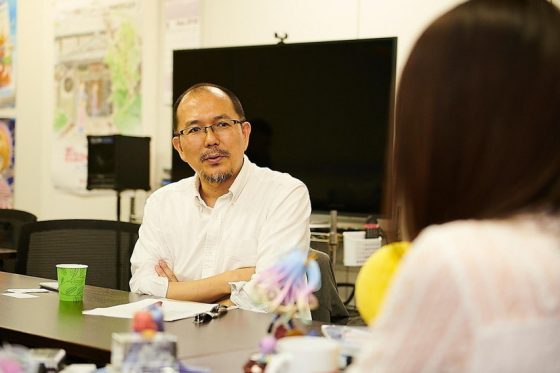
Ishizuka: If you just want a job where you make direction choices, then you can do it with the basic skills you’ve learned. But if you want to become a creator that can move people, then that’s not enough. If you want to grow, then you need to be thinking 24/7 about whether you can think of yourself as an enemy, how you see the world normally, and how to make other people happy. Also, because directors work within a group, you also need to have both the strength to fight yourself and the flexibility to work with others.
TOM (Ryota): What do you mean by “thinking of yourself as an enemy”?
Ishizuka: If you don’t recognize exactly how much you can’t do, you can’t make other people happy. For example, when you’re working alone and you come up with an idea, if you think that it’s good, you should look at it objectively and doubt whether or not it’s actually interesting. When you ask other people their opinions and they tell you it’s interesting, you should wonder whether they’re just trying to encourage you and whether it’s truly interesting. There is a huge difference between critiquing yourself and cynically doubting encouragement and not doubting yourself at all, thinking the best of your ideas. You need the mental toughness to discern that and be the first one to doubt your own ideas.
TOM (Ryota): This is a question from a fan. “What motivates you when you’re creating an anime?” Ms. Ishizuka, you just mentioned how you want to show your ideas to the world.
Ishizuka: I believe everyone thinks that.
Nakamoto: The actual act of making anime is extremely difficult, but getting reactions like, “I was moved!” or, “I cried!” or, “I loved it!” is what makes us happiest. Actually, when I see warm comments like that or get good reviews, I feel relieved that our labor was rewarded and there have been times where I cried (laughs).
Ishizuka: Our audience is using their precious time and money, so we make these titles wanting them to get something out of it. Therefore, being told that the audience properly received what we were trying to give them really makes me happy that we created it.
TOM (Ryota): Are you able to personally experience the reactions of fans, including those overseas?
Ishizuka: I’ve participated in events in Asia, the United States, and Europe. I get the numbers for business, but I don’t really have chances to personally hear the reactions in my daily life, so I’m really happy I’m able to go to events both domestic and international and see people’s reactions in person. People outside of Japan tend to be pretty extroverted, so when I meet people, they’re so affectionate that I feel like they’re going to hug me. Of course, I do feel a lot of affection from Japanese fans when I meet them, too. I believe that Japanese people are shy, but they express their thoughts so strongly to me that I really understand how much affection they feel. I don’t feel a difference in passion between domestic and international fans. Recently, in international events, cosplay has been really popular. I think women with nice figures who cosplay characters wearing skimpy outfits like Steph or Jibril from No Game No Life are really cool (laughs).
TOM (Ryota): I feel like No Game No Life is pretty popular overseas, too.
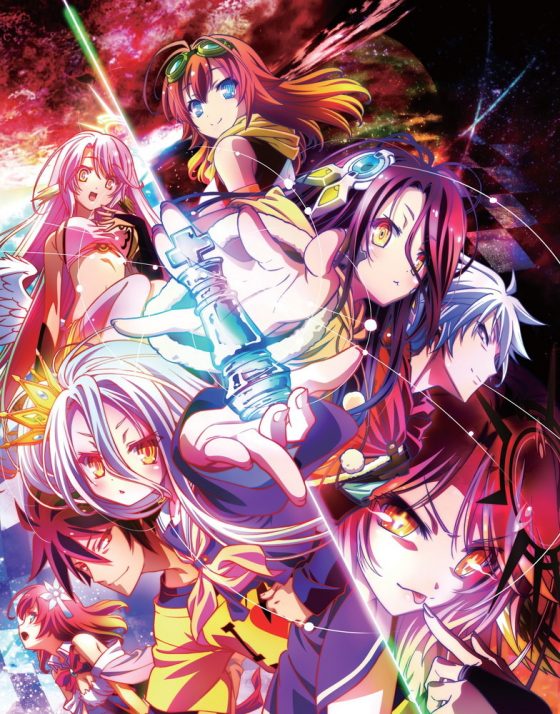
©榎宮祐・株式会社KADOKAWA刊/ノーゲーム・ノーライフ ゼロ製作委員会
Ishizuka: It is! No matter what country I go to, No Game No Life is surprisingly popular. There are often people wearing shirts that say “I ♥ Humanity.” The main characters are siblings who don’t work or go to school, but I guess they’re universally relatable (laughs).
TOM (Ryota): The last thing I want to ask is another fan question. “Is there anything fans can do?” Since we’re in an era of social media, the opportunities for fans to get in touch with creators have been on the rise.
Ishizuka: It’s true that support from fans is our main source of energy, so just telling us something simple like, “I like this anime,” makes us extremely happy. Having the charms of one title spread throughout the world becomes an important opportunity for our next title. I feel that now fans have more ways to participate, like making fanvids on video sites. Each and every action like that is a strong voice of support and helps motivate us.
TOM (Ryota): This interview project is connected to another project where we collect the messages from fans and make them into a poster to give directly to the studio, so it might be useful in that regard.
Nakamoto: If there’s anything that comes out of direct communication, it’s that we can encourage each other. I think it would be good if it can be positive on both sides, regardless of country. We have limits to our imagination, so for a project like this, we’d love for fans to tell us what kind of title they’d like to see. Everyone’s support becomes our motivation for work. To be realistic, anime production companies always have budget problems and business is always tough. Madhouse isn’t an exception. I think every day that it would be really helpful to have others cooperate with us so we can make even better titles and improve our circumstances. We’re always accepting ideas!
Ishizuka: We talked a lot, but I can continue to keep making titles as long as people tell me that our work moved them. Having more methods where people can tell us their thoughts makes me really happy.
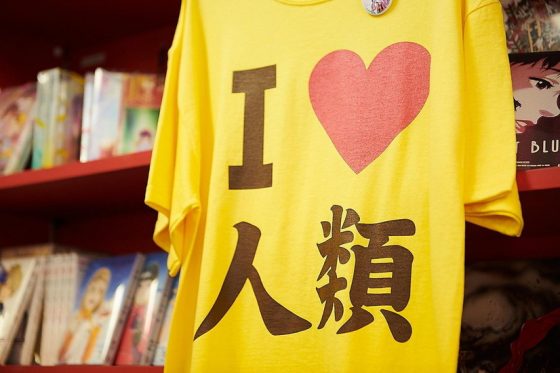
Don't forget to subscribe and support Tokyo Otaku Mode!
